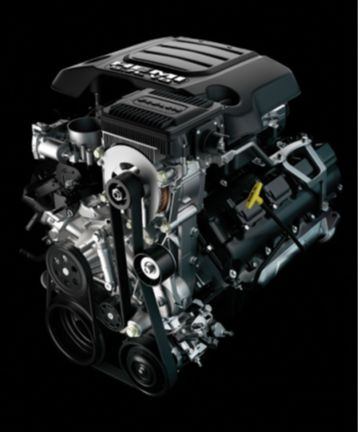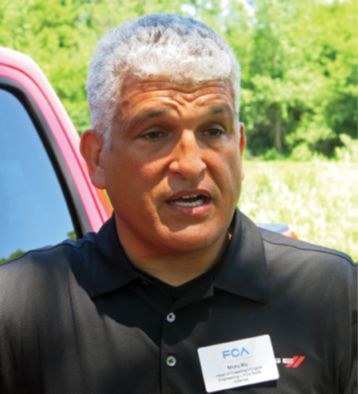尽管大马力 Hellcat 和Demon V8 已经在 FCA 北美市场占据绝对主力位置,Ram和 Jeep 车型也大卖特卖,但混动和纯电动汽车似乎“还没站到主角的位置”,FCA 动力总成发动机研发新任领头人Michael Bly 如是表示。Bly 还同时承认,FCA 公司在新型推进系统领域显然看起来处于落后地位。
在 FCA 近期举办的 2020 年产品预展活动中,Bly 告诉《汽车工程》,“正如采访刚开始,我在回答自己为何选择这个职位时所言,我的脑海里也有一些问题:‘FCA现在(在业内)处于什么地位?’”他说,“因为,我希望看到的是新型混合动力技术与传统内燃机技术齐步前进,共同发展。”
事实上,在正式加入 FCA 之前,Bly已经因“FCA 的未来产品战略”及“90 亿欧元电气化研发投资承诺”而深受鼓舞。“实际上,这个投资已经体现了公司未来产品组合的发展规划。”Bly 断言,“无论是从技术角度(电动汽车、插电式混合动力车、轻混合动力车研发),还是我们正在合作的供应商选择,又或是在遍布世界各地的生产基地和工程设施推进转型来看,这无疑都是体现。”
Bly 在 OEM 和一级供应商领域都有丰富经验。在加入 FCA 之前,他曾担任 American Axle 公司产品管理电气化全球副总裁,在欧洲办公。更早时候还曾在通用汽车(General Motors)公司担任动力总成和车辆电气化方面的关键工程管理职位。近日,自 FCA 动力总成上任老板 Bob Lee 正式退休以来,Bly 与全球动力总成开发负责人 Jeff Lux 将暂时共同分担 Lee 之前的工作。
目前,FCA 的先进推进系统研发计划规模有限,但意义重大。FCA 是北美市场采用 48V 轻混合动力系统的先锋,且已经与大陆集团(Continental)和 Magneti-Marelli 公司签订供应协议,由这两家供应商分别为旗下 Ram 和 Jeep 使用的汽油 V6和 V8 发动机生产 “eTorque” 系统。此外,公司的 Pacifica 插电式混动休旅车也受到行业工程师的广泛赞誉。
与此同时,FCA 还在积极改变市场对我们的“感觉”。“现在,我们正在投放现场解决方案,”Bly 表示,“混动休旅车Pacifica 就是一个很好的例子,性能出众、功能明确、能耗出色。我们现在需要解决的就是‘如何让它变得更好一点’?”
目前,Bly 和 Lux 的团队正处于制定推进技术发展路线图的关键时期,并致力于在关键电气化领域建立完善的供应商关系。
“电机:电机可以帮我们实现哪些目标?我们的技术是什么?我们的合作伙伴又是谁?”Bly 问道,“电池:10 年前当我刚刚从这个领域起步时,电池领域还有很多初创公司,但现在已经优胜略汰到就这么三到四家了,也就是 LG、三星、松下和 CATL 这四大巨头。我们在电池领域投入了很多精力,主要集中在如何使用电池更好地配合我们的战略开发与产品路线。”
Bly 认为,动力电子元件是 FCA 公司的核心技术领域。他说,“我们正在寻找最佳做法。如今,领域内有大量元件供应商,我认为你必须把大家全部整合到一起、明确价格定位、投入软件和控制系统,最终才能确立我们在动力电子元件方面的核心优势。在我看来,这是推动 FCA 前进的动力,也是我们可以真正发挥影响力的地方。”
Bly 承认,电气化将给供应商带来巨大压力。所有供应商都必须在“正在为公司‘买单’的现有产品”和“近期很难真正盈利的新兴技术”之间谨慎平衡投资,哪怕这些新技术可能需要数年才能初现规模并真正赚取利润。
Bly 举了一个之前在动力传动系统供应商工作时的例子。“有四到五家供应商在车桥和变速箱方面非常专业,每年都要奋力竞争 1 亿辆汽车应用的订单,每家都希望增加自己的市场占有率。”
“在这 1 亿辆汽车订单中,电气化汽车的市场份额可能在 2%、5%,甚至 10%。”Bly 解释道,“我们假定 10%,那现在有 1,000 万辆汽车订单,有 10 家供应商希望将市场份额从 10% 增加到 20%、25%,甚至是 30%。那么他们面临的将是什么?一场血战!这种现实下,如何推出过硬的技术至关重要。”
Bly 表示,美国市场对小型汽车的“不待见”和仍旧高昂的电池成本将进一步拉大全球汽车市场的差异,而且各地的监管限制也有不同,这也势必带来影响。FCA 必须“小心对待(燃油经济性)合规性问题,”他指出,目前,我们正在从特斯拉(Tesla)购买碳排放额度。我们必须谨慎对待合规性问题。我们的车型以大型为主,我们不能一直贴钱卖车。”
Bly 对电池和电机的价格下降持乐观态度。“如今,只要来点电气化,无论多少。都可以在这个市场中发挥作用。”
Bly 表示,对于底特律“汽车三巨头”及其主营的皮卡业务来说,目前,内燃发动机的处境很好,甚至柴油发动机的机会也不错。但他也同时承认,内燃发动机的活跃年限在缩短。
Bly 预测,柴油发动机在本世纪 20年代结束前仍将保有一席之地,但已是“夕阳行业”,这是因为柴油发动机为满足法规要求而必须额外支出的后处理成本“非常高昂”。
除了柴油发动机,其他内燃发动机的整体情况也是“日落西山”吗?Bly 表示,“我认为,有的公司可能已经停止研发内燃发动机了,但我们还没停。FCA 还将至少完成一个内燃发动机开发周期。”
“我认为,我们还将继续推进优化,比如将燃油经济性再提高一点点、马力输出再增加一点点、尺寸再缩小一点点等,直到我们找到性能与成本的最佳平衡点。”
在此背景下,FCA 动力系统集团正在同时招聘内燃发动机和电动推进系统方面的人才。未来,推进系统将继续是 FCA 集团的核心竞争力,“我们总得想办法把这 90 亿美元花掉吧?”Bly 笑称。
With its asphalt-ripping Hellcat and Demon V8s dominating the engine headlines at FCA North America, and boom times for Ram and Jeep sales, hybridization and battery electric vehicles (EVs) have “not been the leading-edge story,” notes Michael “Micky” Bly, the company’s newly arrived head of Powertrain Engine Engineering. And, he acknowledged, the company is clearly perceived as trailing the industry in the new- propulsion space.
“When I started the interview process to come to this position, that was one of my questions: ‘Where is FCA? Give me some insight,’” he told Automotive Engineering at the company’s recent 2020 product preview. “Because what I’m intrigued about is seeing this technology develop—as well as ICE’s continuing progress at the same time.”
Before hiring in, Bly was encouraged by a peek behind the future-product curtain, and by FCA’s commitment to invest nine billion euros in electrification over the next few years. “And that number is a reflection of what’s really coming in the portfolio,” he asserted, “either from a technology point of view— whether it’s EVs, plug-in hybrids, mild hybrids—or suppliers we’re working with, or conversion around the world of our manufacturing sites and engineering facilities.”
FCA is expected to benefit from Bly’s extensive experience on both the OEM and Tier-1 sides. He was previously American Axle’s global VP for Product Management Electrification, based in Europe. Before that, at GM, he held key engineering management positions for powertrain and vehicle electrification. With veteran FCA powertrain boss Bob Lee’s recent retirement, Bly is teaming with Jeff Lux—named head of global powertrain development—in an interim arrangement to fill Lee’s position.
Their current advanced-propulsion initiatives are limited but significant. FCA is in the vanguard of adopting 48-volt mild-hybrid systems in North America, with Continental and Magneti-Marelli “eTorque” systems in production on both its gasoline V6 and V8 engines, respectively, for Ram and Jeep. There’s also the Pacifica plug-in hybrid that’s widely lauded by industry engineers.
Meanwhile, FCA is catching up in the perception battle. “Right now, we’re kind of putting in spot solutions,” he said. “The [PHEV] Pacifica is a good example: a good vehicle with a good purpose. It’s demonstrated fantastic fuel-economy performance. How do we make it a little better?”
What to do, what to let others do
Bly and Lux’s team are deep into establishing FCA’s propulsion-tech roadmap and are focused on building supplier relationships in the key electrification areas.
“Motors: where are we going to go with motors? What is our technology; who’s going to be our partner?” he said. “Batteries, it’s boiling down to maybe three suppliers after all the startups maybe 10 years ago when I was starting in this space. And we know who they are—it’s the LGs, it’s the Samsungs, Panasonic, CATL. Those are kind of the four biggies. Spend a lot of time with it, see how those road- maps can fit into our area.”
Bly believes power electronics is a core technology area for FCA. “We’re trying to understand where we take that,” he said. “There are a lot of component suppliers; with power electronics you’ve got to pull them all together, right price point, throw in software and controls and that’s where we have a core fundamental advantage, I think. That’s one area I see as a thrust; we can make an impact.”
EVs and the supply challenge
Bly acknowledges that electrification presents a tremendous pressure for suppliers, who must carefully balance their investments between “pay the bills” legacy products and new technologies that may take years to build scale and earn a profit.
He uses his previous experience in driveline supply as an example. “There are four or five suppliers that are really good at axles and transmissions and they’re fighting for 100 million cars every year. They want that volume split up.
“In the electrification space, you go all the way down to 2%, 5%— even 10% if you stretch it—of the market,” he explained. “Let’s say 10 million cars—you’ve got 10 suppliers fighting like heck for 10% of the market today to grow to 20%, maybe 25%, maybe 30%. It’s a blood- bath right now for the suppliers,” he noted. “How do they bring a technology forward that’s compelling?”
And the U.S.’s shift away from small cars, combined with the still- high cost of batteries means there is a widening divide regarding what works in various world markets, Bly said. Or what’s possible in relation to varying regulatory strictures. He noted that FCA has to “be very careful of our [fuel economy] compliance. We’re buying credits—European consolidation credits with Tesla. So, we’ve got to make sure we get a compliance play. We’re not in position to spend any money to sell cars. We have a large [model line] footprint, we have big vehicles.”
Bly is optimistic about the decreasing price points of batteries and electric motors. “You’re almost getting to a crossover point where, within a couple percentage points electrification—either light or heavy—can play in this market.”
For the Detroit Three and their dominating pickup business, it’s a great time for internal combustion—even diesel. But Bly concedes that the ICE’s time in waning.
Diesel will have a place until the end of the 2020s, he predicts, but the technology is “sunsetting.” The cost of aftertreatment to meet regulatory compliance is getting “really expensive,” Bly explained.
What about ICEs in general: are they in their descendancy? “I think there are certain companies that are done,” Bly stated. “We’re not in that place. We probably have one more [engine development] cycle for sure that we have to execute.
“We’re going to turn one more, I think, to get all of our highest fuel-efficiency numbers, get the output up a little bit more, maybe downsize it a little bit more— find that sweet spot in that space.”
That’s why FCA’s powertrain group is hiring engineers—to do both ICE and EV development, Bly concedes. “I’ve got to find a way to spend nine billion dollars,” he said with a laugh, noting that propulsion technology will continue to be an FCA core engineering competency going forward.
Author: Bill Visnic
SAE Automotive Engineering
 在 SAE 采访 Micky Bly 之后几天,FCA 和 ZF 公布了 ZF 将为 FCA 大规模供应 8 速自动变速器的消息。ZF 表示,最新一代 8HP 设计“采用集成电动驱动器,适用于混合动力车型。”分析认为,这份史上第二大变速器订单将允许 FCA 为旗下一大批最畅销车型提供混合动力版本,包括 Jeep 大切诺基和 Ram 皮卡车。
在 SAE 采访 Micky Bly 之后几天,FCA 和 ZF 公布了 ZF 将为 FCA 大规模供应 8 速自动变速器的消息。ZF 表示,最新一代 8HP 设计“采用集成电动驱动器,适用于混合动力车型。”分析认为,这份史上第二大变速器订单将允许 FCA 为旗下一大批最畅销车型提供混合动力版本,包括 Jeep 大切诺基和 Ram 皮卡车。 FCA 公司的标志性 Hemi V8 发动机是公司北美市场最重要的推进系统之一,2019 款产品更是搭配了来自 Magneti-Marelli 的 “eTorque” 48V 轻混合系统(可选配置),从而使效率和性能都有所提高。目前,这也是全尺寸皮卡领域唯一的混合动力技术。
FCA 公司的标志性 Hemi V8 发动机是公司北美市场最重要的推进系统之一,2019 款产品更是搭配了来自 Magneti-Marelli 的 “eTorque” 48V 轻混合系统(可选配置),从而使效率和性能都有所提高。目前,这也是全尺寸皮卡领域唯一的混合动力技术。 “如今,只要来点电气化,无论多少都可以在这个市场中发挥作用。”
“如今,只要来点电气化,无论多少都可以在这个市场中发挥作用。”
